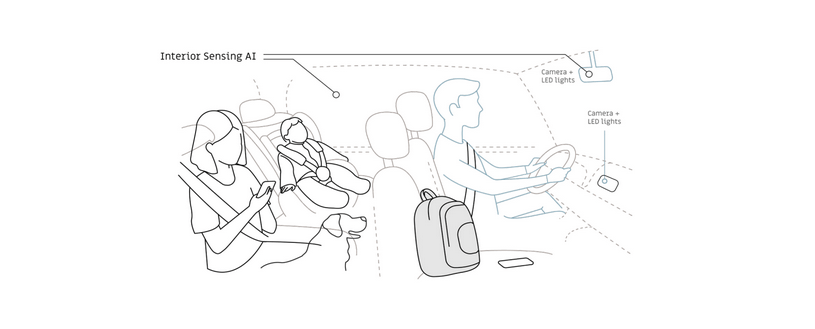EN


For years, car manufacturers have been using sensors to better understand what happens on the roads. From earlier versions that react when a driver gets close to backing into an object, to modern, self-driving capabilities that let the car parallel park by itself. But for the most part, those sensors have been focused on the outside of the car. Focused on the exterior roadways, these sensors miss a very important part of the vehicle environment: the driver, the cabin and the passengers in it. As long as the car has little understanding of what goes on with the people in it, its comprehension of a situation will be incomplete. Only by turning sensors, such as cameras, inwards can we get the full picture.
The idea of using sensors and AI-based software to understand the interior of a vehicle is not a new concept. In recent years, Driver Monitoring Systems (DMS) have become a must-have technology in cars. Driven by regulation and legislation, safety systems that detect driver impairment and enable appropriate interventions are being deployed by car manufacturers all over the world. Beyond regulation, Euro NCAP’s latest update of their new car assessment protocol is further fueling the widespread adaptation of DMS. Combining sensors, such as in-car cameras, with computer vision and machine learning based software, modern driver monitoring systems bring insight into the driver’s state and behavior. With their ability to detect driver distraction and drowsiness, driver monitoring systems have become a key technology for preventing accidents and improving road safety.
As early as the late 1990’s, Smart Eye was pioneering the use of eye tracking technology to detect dangerous driving behavior. While eye movements remain an important key to understanding the state of the driver, the last decade has seen this technology develop and expand beyond the eyes. Besides eye tracking, the new generation of DMS is based on a number of core technologies, such as facial feature analysis, head tracking, facial expression and emotion classification, activity, body pose tracking, and object detection.
These newer systems can identify all types of occupants, their activities and the objects they use, enabling greater customization of the car’s interior systems and features. From seats that automatically adjust to a registered user to infotainment systems that make content suggestions based on the driver’s mood and emotions.
With this wide array of possibilities unlocked by new sensors and algorithms, the automotive industry has come to the profound realization that this technology can be extended beyond the driver. If these sensors are allowed to reach the entire car interior, we can gain valuable information about the state of the cabin and the occupants in the car. This is what we call Interior Sensing, or In-Cabin Sensing. As the natural evolution of driver monitoring systems, interior sensing systems are expected to be the next frontier in improving road safety and humanizing mobility experiences that enhance comfort, wellness and entertainment.
Want to learn more about interior sensing?
Download our eBook on Interior Sensing: The Next Frontier in Improving Road Safety and the Mobility Experience
